Cai Fu
HCL-MTSAD: Hierarchical Contrastive Consistency Learning for Accurate Detection of Industrial Multivariate Time Series Anomalies
Apr 12, 2024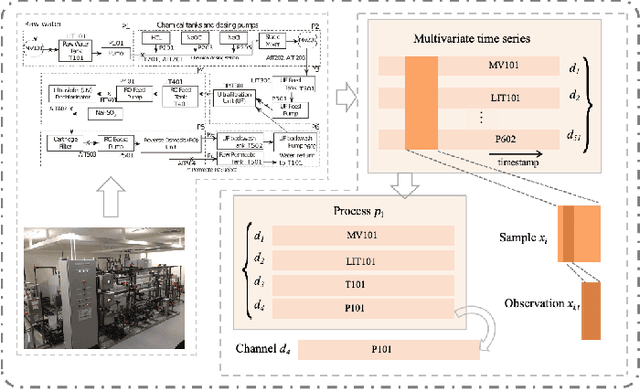



Abstract:Multivariate Time Series (MTS) anomaly detection focuses on pinpointing samples that diverge from standard operational patterns, which is crucial for ensuring the safety and security of industrial applications. The primary challenge in this domain is to develop representations capable of discerning anomalies effectively. The prevalent methods for anomaly detection in the literature are predominantly reconstruction-based and predictive in nature. However, they typically concentrate on a single-dimensional instance level, thereby not fully harnessing the complex associations inherent in industrial MTS. To address this issue, we propose a novel self-supervised hierarchical contrastive consistency learning method for detecting anomalies in MTS, named HCL-MTSAD. It innovatively leverages data consistency at multiple levels inherent in industrial MTS, systematically capturing consistent associations across four latent levels-measurement, sample, channel, and process. By developing a multi-layer contrastive loss, HCL-MTSAD can extensively mine data consistency and spatio-temporal association, resulting in more informative representations. Subsequently, an anomaly discrimination module, grounded in self-supervised hierarchical contrastive learning, is designed to detect timestamp-level anomalies by calculating multi-scale data consistency. Extensive experiments conducted on six diverse MTS datasets retrieved from real cyber-physical systems and server machines, in comparison with 20 baselines, indicate that HCL-MTSAD's anomaly detection capability outperforms the state-of-the-art benchmark models by an average of 1.8\% in terms of F1 score.
Unsupervised Spatio-Temporal State Estimation for Fine-grained Adaptive Anomaly Diagnosis of Industrial Cyber-physical Systems
Mar 05, 2024Abstract:Accurate detection and diagnosis of abnormal behaviors such as network attacks from multivariate time series (MTS) are crucial for ensuring the stable and effective operation of industrial cyber-physical systems (CPS). However, existing researches pay little attention to the logical dependencies among system working states, and have difficulties in explaining the evolution mechanisms of abnormal signals. To reveal the spatio-temporal association relationships and evolution mechanisms of the working states of industrial CPS, this paper proposes a fine-grained adaptive anomaly diagnosis method (i.e. MAD-Transformer) to identify and diagnose anomalies in MTS. MAD-Transformer first constructs a temporal state matrix to characterize and estimate the change patterns of the system states in the temporal dimension. Then, to better locate the anomalies, a spatial state matrix is also constructed to capture the inter-sensor state correlation relationships within the system. Subsequently, based on these two types of state matrices, a three-branch structure of series-temporal-spatial attention module is designed to simultaneously capture the series, temporal, and space dependencies among MTS. Afterwards, three associated alignment loss functions and a reconstruction loss are constructed to jointly optimize the model. Finally, anomalies are determined and diagnosed by comparing the residual matrices with the original matrices. We conducted comparative experiments on five publicly datasets spanning three application domains (service monitoring, spatial and earth exploration, and water treatment), along with a petroleum refining simulation dataset collected by ourselves. The results demonstrate that MAD-Transformer can adaptively detect fine-grained anomalies with short duration, and outperforms the state-of-the-art baselines in terms of noise robustness and localization performance.
MTS-DVGAN: Anomaly Detection in Cyber-Physical Systems using a Dual Variational Generative Adversarial Network
Nov 04, 2023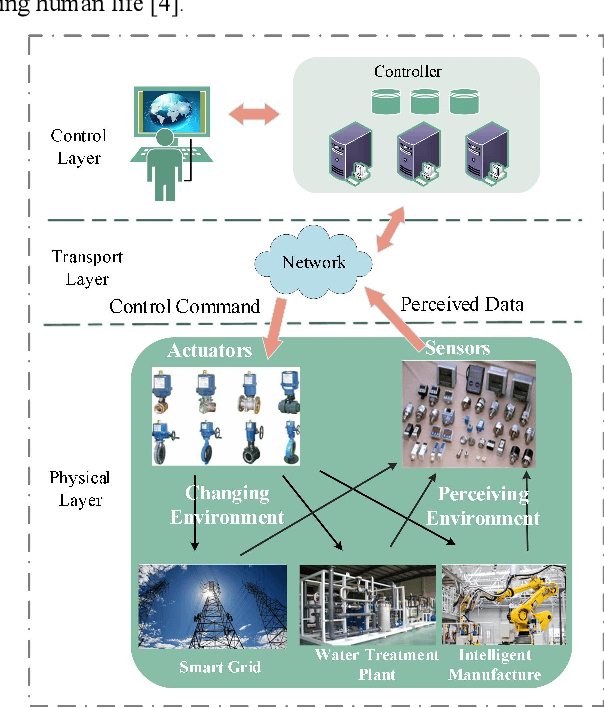

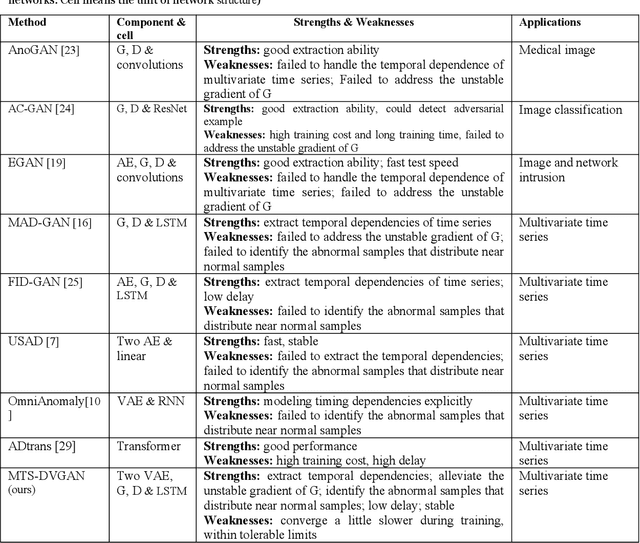
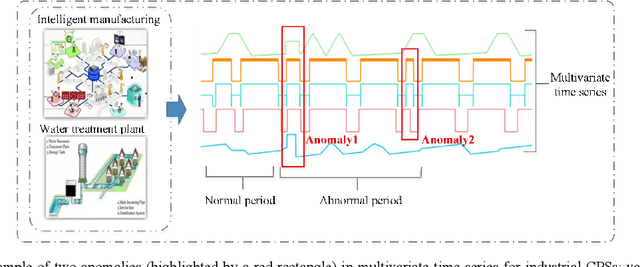
Abstract:Deep generative models are promising in detecting novel cyber-physical attacks, mitigating the vulnerability of Cyber-physical systems (CPSs) without relying on labeled information. Nonetheless, these generative models face challenges in identifying attack behaviors that closely resemble normal data, or deviate from the normal data distribution but are in close proximity to the manifold of the normal cluster in latent space. To tackle this problem, this article proposes a novel unsupervised dual variational generative adversarial model named MST-DVGAN, to perform anomaly detection in multivariate time series data for CPS security. The central concept is to enhance the model's discriminative capability by widening the distinction between reconstructed abnormal samples and their normal counterparts. Specifically, we propose an augmented module by imposing contrastive constraints on the reconstruction process to obtain a more compact embedding. Then, by exploiting the distribution property and modeling the normal patterns of multivariate time series, a variational autoencoder is introduced to force the generative adversarial network (GAN) to generate diverse samples. Furthermore, two augmented loss functions are designed to extract essential characteristics in a self-supervised manner through mutual guidance between the augmented samples and original samples. Finally, a specific feature center loss is introduced for the generator network to enhance its stability. Empirical experiments are conducted on three public datasets, namely SWAT, WADI and NSL_KDD. Comparing with the state-of-the-art methods, the evaluation results show that the proposed MTS-DVGAN is more stable and can achieve consistent performance improvement.
* 27 pages, 14 figures, 8 tables. Accepted by Computers & Security
Reinforcement Learning-based Black-Box Evasion Attacks to Link Prediction in Dynamic Graphs
Sep 12, 2020
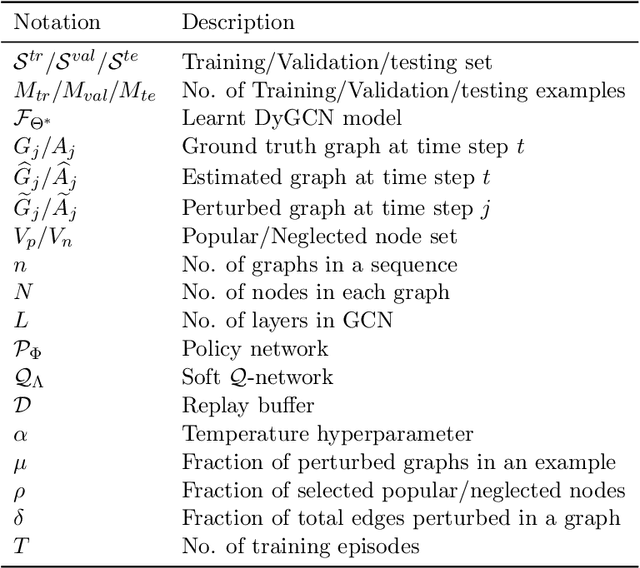

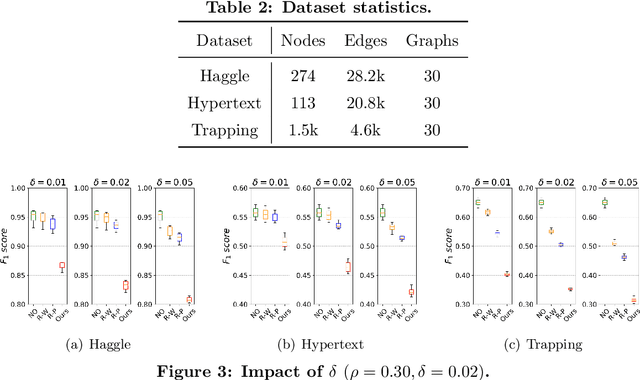
Abstract:Link prediction in dynamic graphs (LPDG) is an important research problem that has diverse applications such as online recommendations, studies on disease contagion, organizational studies, etc. Various LPDG methods based on graph embedding and graph neural networks have been recently proposed and achieved state-of-the-art performance. In this paper, we study the vulnerability of LPDG methods and propose the first practical black-box evasion attack. Specifically, given a trained LPDG model, our attack aims to perturb the graph structure, without knowing to model parameters, model architecture, etc., such that the LPDG model makes as many wrong predicted links as possible. We design our attack based on a stochastic policy-based RL algorithm. Moreover, we evaluate our attack on three real-world graph datasets from different application domains. Experimental results show that our attack is both effective and efficient.
Evasion Attacks to Graph Neural Networks via Influence Function
Sep 12, 2020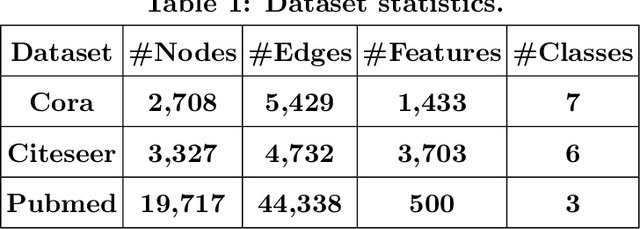



Abstract:Graph neural networks (GNNs) have achieved state-of-the-art performance in many graph-related tasks, e.g., node classification. However, recent works show that GNNs are vulnerable to evasion attacks, i.e., an attacker can slightly perturb the graph structure to fool GNN models. Existing evasion attacks to GNNs have several key drawbacks: 1) they are limited to attack two-layer GNNs; 2) they are not efficient; or/and 3) they need to know GNN model parameters. We address the above drawbacks in this paper and propose an influence-based evasion attack against GNNs. Specifically, we first introduce two influence functions, i.e., feature-label influence and label influence, that are defined on GNNs and label propagation (LP), respectively. Then, we build a strong connection between GNNs and LP in terms of influence. Next, we reformulate the evasion attack against GNNs to be related to calculating label influence on LP, which is applicable to multi-layer GNNs and does not need to know the GNN model. We also propose an efficient algorithm to calculate label influence. Finally, we evaluate our influence-based attack on three benchmark graph datasets. Our experimental results show that, compared to state-of-the-art attack, our attack can achieve comparable attack performance, but has a 5-50x speedup when attacking two-layer GNNs. Moreover, our attack is effective to attack multi-layer GNNs.
 Add to Chrome
Add to Chrome Add to Firefox
Add to Firefox Add to Edge
Add to Edge